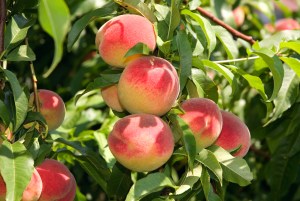
Southeast peach producers have new tools in the fungicide toolbox for the 2021 season. According to the UGA Peach Blog, Cevya, Miravis and Miravis Duo and Chairman are new products that growers need to implement in a way that will allow for efficient and protect against resistance development.
University of Georgia Extension fruit disease specialist Phil Brannen said Cevya is a DMI (DeMethylation Inhibitors) fungicide that was registered for use last year by BASF.
However, because it is a DMI, growers need to treat it like any other DMI since there has been DMI resistance in previous years. Brannen prefers that Cevya be used only in late-season sprays for brown rot disease.
Miravis and Miravis Duo
Miravis and Miravis Duo are Syngenta products. They are extremely active against peach scab, a fungal disease that thrives in a wet environment. Scab is the second most impactful disease that peach farmers deal with ranking just behind brown rot. Miravis and Miravis Duo also provide brown rot control that is comparable to Merivon or Luna Sensation.
If growers are not having any issues with peach scab, then they are encouraged to still use chlorothalonil (e.g. Bravo and generics).
Chairman
Chairman, another product from Syngenta, is a post-harvest packing line that is similar to Scholar. Brannen said it is basically a combination of Scholar and propiconazole, which is a DMI. The addition of the DMI provides potential sour rot management. This is the last opportunity to manage sour rot as the fruit goes to market, so growers are to consider Chairman if it is a concern. It may also broaden brown rot efficacy.
Resistance management remains a top priority for peach producers, especially when incorporating new chemical applications.
“With brown rot being the kind of fungus it is, we know it can develop resistance; thankfully, we’ve been able to develop some good programs that even where we’ve had some DMI resistance, we can still get good control and incorporate some DMIs. But we try to use only one class of chemistry if possible once or twice per year,” Brannen said. “We try to utilize the old chemicals like chlorothalonil, like captan, like Sulfur and save all of the other classes of chemistries where there can be resistance until the very end where we have such a problem with brown rot. Then we try to utilize them only once or twice per class.”









